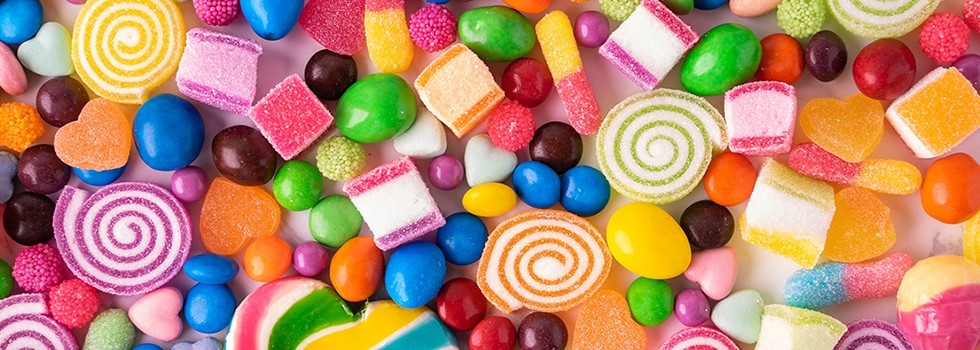Promotional Features
Finding confection perfection
Despite the many ways the coronavirus pandemic has affected consumer behaviors around the world, the global confectionery industry remains strong; although growth trajectories have slowed somewhat, the sector still managed to generate total sales of $210 billion in 2020, and an additional $25 billion is expected by 2023.[1]
What accounts for the resilience of confectionery? For one thing, it continues to run on innovation; developing new products that diversify their offerings and hold consumers' interest is a never-ending job for manufacturers. Experimenting with new ingredients and flavors, reducing sugar levels, removing artificial ingredients and additives to create more attractive nutritional profiles – all aim to capture the attention of more candy lovers.
Economic concerns and tighter personal budgets stemming from the pandemic have many consumers limiting their indulgence in confections and making more disciplined choices[2]. In such a competitive market, winning new customers is important, but maintaining consumer loyalty is crucial. Doing that depends on keeping a number of key considerations top-of-mind in the process of developing and formulating new confectionery products – factors that can make the difference when striving to meet the expectations of demanding consumers.
Consumers want it all
Flavor innovation is always at the center of new product development, whether manufacturers are exploring exotic fruits or spices, or trying out unique sensory combinations they believe will set their products apart. Five fruit flavors in particular – strawberry, orange, lemon, cherry and green apple – are featuring prominently in development activities in the European market, marking a significant shift away from more traditional flavor profiles.[3] New products offering the indulgence of flavored layers or introducing intense flavors are appearing now on supermarket shelves.
Enticing flavor concepts are not enough, however. Confectionery consumers are highly discerning, and intolerant when the reality of a product does not meet their expectations for color, appearance, texture or taste. They look for brands that consistently offer quality, valuing candies that hold their visual appeal longer and that retain their color, flavor and texture over time, even when the packaging has already been opened. Consequently, manufacturers need innovative solutions that can balance multiple priorities: creating distinctively delicious flavors, enhancing product appearance and texture, and maintaining all those essential aspects of product quality throughout shelf life.
Challenges to product stability
A number of factors, including the environment, packaging and product pH can work against manufacturers in their quest to achieve optimal stability in sugar confectionery, a goal that often proves to be elusive. Choosing the wrong acidulant to create a pleasing sweet/sour balance can result in sugar inversion in hard-boiled candies, a common pitfall whereby the sugar splits into glucose and fructose, triggering moisture absorption. In soft candies, such as jellies and gums, problems often take the form of lost gel strength.
The environment, especially in warmer or higher humidity climates, can also present challenges to confectionery stability. Hard-boiled candies exposed to high temperatures and humidity can accelerate sugar inversion, creating a sticky surface that is unacceptable to discerning customers. Similarly, such conditions cause acid-sanded jellies and gums to attract moisture from their surroundings much faster. This hygroscopicity leads to a ‘wet’ appearance that takes away from the product's visual appeal and causes acid to migrate from the exterior of the candy into its interior. When this occurs, jellies and gums lose their instant sour flavor impact, and migrated acid may even compromise the quality of the candy base.
In the search for solutions to these issues, manufacturers have experimented with thicker packaging materials or placed smaller bags inside an outer package. Even when effective, however, these solutions come with increased costs – both financial and environmental.
When it comes to mastering confectionery flavors, sourness has long been a taste component helpful in offsetting the otherwise intense sweetness of sugar. With consumers turning toward new and exciting flavors and flavor combinations, including intense sourness, pulling off the perfect, often unique, flavor profile has become a central challenge for manufacturers. Acidulants, particularly citric acid, are widely used across the industry to create flavor profiles that authentically mimic the taste of real fruit. Developing a stable sugar-acidulant matrix, however, is far from easy, since the addition of an acidulant often impacts overall quality and texture stability in confectionery products.
Striking the perfect balance
Every acidulant comes with its own particular sour taste profile; some are intense and dissipate quickly, while others are smooth and long lasting. So, acidulant selection is a major consideration in the process of developing the desired taste. Combining acidulants often provides the answer; the freshness of citric acid, for example, mixed with the mild, lingering notes of lactic acid can create an well-rounded, great-tasting candy. Buffered acid blends can provide flexibility in tailoring a sour taste experience without lowering the product's pH, which helps to ensure the product stays firm and visually attractive.
The search for the optimal solution can be expedited using predictive modelling tools such as the Corbion® Sourness and Stability Calculator built by the global lactic acid leader. The tool applies scientific calculations to help manufacturers quickly forecast the impact of various acid types and concentrations on the sourness of candy products; its use cuts the amount of time and money spent conducting lab trials, and contributes to greater R&D efficiency.
In acid-sanded confectionery, acid powders can also be used to create differentiated flavors; specific combinations of acids will impart specific sour taste profiles. In addition to enhancing sourness, the right blend of acid powders can also minimize migration of the acid powder into the candy, thereby keeping more of it in the sanding sugar on the candy's surface throughout shelf life.
A winning balance
Accomplishing the dual objectives of differentiated taste and product stability is essential when it comes to creating a new confection that will win in the market. Ingredient selection must be considered carefully when formulating new recipes to ensure they meet all the demands of today’s consumers, not just eliciting favorable first impressions, but also avoiding buyer's remorse during shelf life.
Having the flexibility to choose from a range of buffered acid blends, like those offered by Corbion under its PURAC® brand, can provide both much-needed stability and the differentiated flavors that can earn consumers' loyalty. These acid powders can be equally helpful in delivering immediate sourness and the ideal taste experience in acid-sanded candies throughout their shelf life.
Having a unique and varied ingredient portfolio that serves as a complete toolbox for the manufacturer can be key to creating singular taste profiles in confectionery of unimpeachable quality. And that, after all, is what marketplace successes are made of.
---------
References:
[1] Source: GlobalData's COVID-19 Market Forecasts as of September 18, 2020
[2] Source: GlobalData's COVID-19 Market Forecasts as of September 18, 2020
[3] Source: Confectionery global trends 2021

